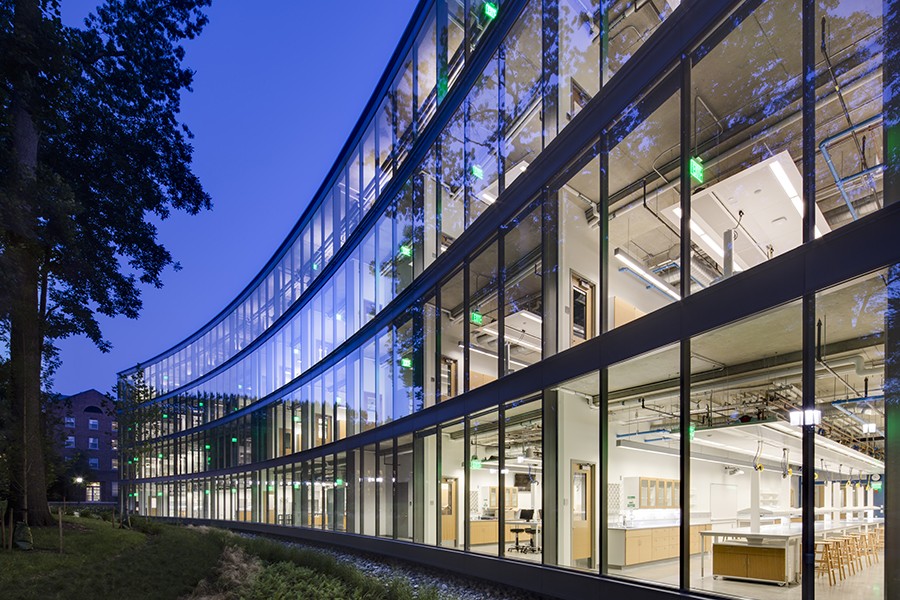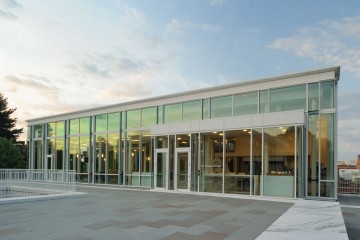The Undergraduate Teaching Laboratories, a state-of-the-art lab space on the Johns Hopkins University Homewood campus, has received the highest certification available—platinum—from the Leadership in Energy and Environmental Design program.
The internationally recognized LEED program is administered by the U.S. Green Building Council and provides a numeric score for green building design, construction, operations, and maintenance. The UTL building received a numeric score of 80 out of 108 possible points.
"The university has a LEED silver standard, so to achieve platinum for such a resource-intensive building truly speaks to the design and construction team's commitment to integrate sustainability in innovative ways throughout the space," said Ashley Pennington, program manager of the Johns Hopkins Office of Sustainability. "It's an impressive feat."
The UTL building contains 20 high-tech lab spaces and classrooms for undergrads and faculty in the departments of Chemistry, Biology, Biophysics, Psychological and Brain Sciences, and Neuroscience. Opened in 2013, the four-story, 105,000-square-foot facility was designed by Ballinger of Philadelphia to use 40 percent less energy than similar code-compliant lab buildings. Its energy-efficient designs include highly efficient heating and cooling systems, occupancy sensors that control lights and HVAC, daylight sensors, low-flow water fixtures, and cutting-edge lab technologies designed to conserve energy and water.
For example, a typical lab creates vacuums for experiments using water, whereas the UTL building utilizes vacuum pumps with on/off switches, conserving the water that would otherwise be discarded after use. Also in the labs are high-performance fume hoods, which provide protection for scientists while conserving energy.
The building's heating and cooling system uses chilled beams—a more efficient way of moving air around a building than standard ductwork—and dual wheel technology, which takes in outside air, cools it rapidly to remove moisture, and then warms the air to an ambient temperature. The system features sophisticated controls that can shut off heating and cooling to individual labs, allowing plant operations to save energy during semester breaks.
"Compared to its neighbors Mudd Hall, the Levi Building, and the Biology III Building, the UTL building is using about half the energy they use," said Matthew Beecy, associate director of engineering, energy and sustainability for Johns Hopkins Facilities and Real Estate. "They're very similar buildings in terms of use, but because of the technology we installed and how we operate the building, we're able to save on the energy we typically would use."
The UTL building's design success will serve as the model for the recently announced $30 million renovation of Macaulay Hall.
"From the very first moment I stepped on campus, the UTL stood out as a building that truly marries form and function," said Bob McLean, vice president of Johns Hopkins Facilities and Real Estate. "Through some cutting-edge engineering elements, the building has exceeded expectations in terms of performance, and the versatility of its laboratory design not only enhances educational opportunities, but keeps the space adaptive for a continuously changing campus."
Posted in University News
Tagged homewood campus, sustainability, energy











